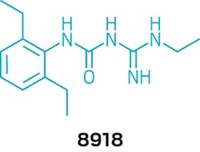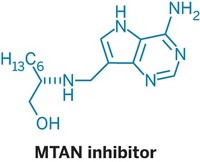Advertisement
Grab your lab coat. Let's get started
Welcome!
Welcome!
Create an account below to get 6 C&EN articles per month, receive newsletters and more - all free.
It seems this is your first time logging in online. Please enter the following information to continue.
As an ACS member you automatically get access to this site. All we need is few more details to create your reading experience.
Not you? Sign in with a different account.
Not you? Sign in with a different account.
ERROR 1
ERROR 1
ERROR 2
ERROR 2
ERROR 2
ERROR 2
ERROR 2
Password and Confirm password must match.
If you have an ACS member number, please enter it here so we can link this account to your membership. (optional)
ERROR 2
ACS values your privacy. By submitting your information, you are gaining access to C&EN and subscribing to our weekly newsletter. We use the information you provide to make your reading experience better, and we will never sell your data to third party members.
Biological Chemistry
RNA Recycling As An Antibiotic Plan
Stopping degradation of outdated RNA helps staph-infected mice survive
by Carmen Drahl
February 21, 2011
| A version of this story appeared in
Volume 89, Issue 8
Molecules that interfere with RNA processing in bacterial cells might have potential as a new class of antibiotics, a study in mice suggests (PLoS Pathogens, DOI: 10.1371/
journal.ppat.1001287). Microbes such as Staphylococcus aureus have developed resistance to many of medicine’s most powerful treatments, so researchers are hunting for drugs that work in different ways. The RNA-recycling process, which bacteria need to break down protein-making instructions that are no longer necessary and create new ones, has been considered a ripe target. But the enzyme players in gram-positive bacteria such as S. aureus aren’t clearly understood. Enter Paul M. Dunman of the University of Rochester and colleagues, who found that an essential bacterial protein called RnpA helps degrade those RNA instructions. They searched for inhibitors of RnpA and found RNPA1000, a molecule that blocks RnpA’s activity and helps mice survive S. aureus infection. Although the molecule is toxic to human cells at effective bacteria-killing concentrations, next-generation compounds may work better, the team says. They plan to use RNPA1000 to further probe RnpA’s role in infection.





Join the conversation
Contact the reporter
Submit a Letter to the Editor for publication
Engage with us on Twitter